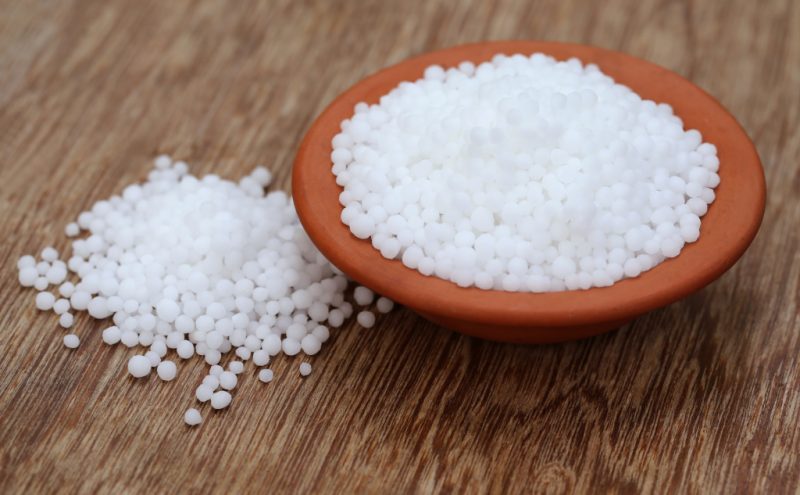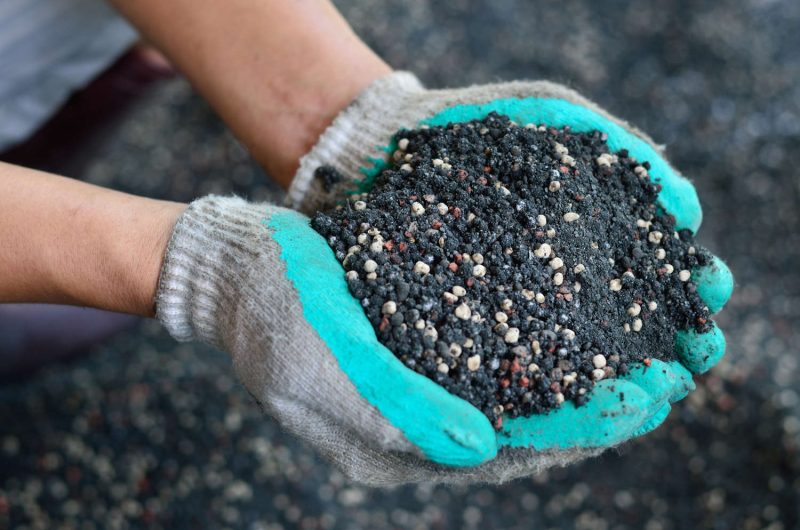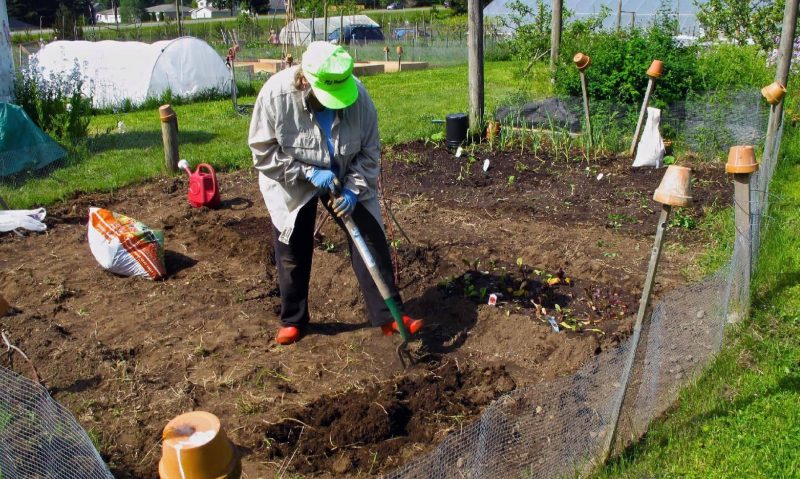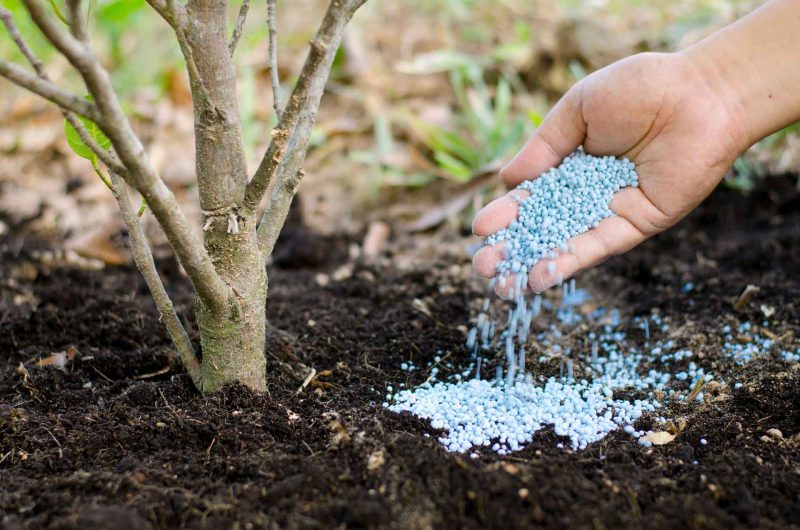Not all gardeners in the plots have rich, fertile soil. Over time, giving its useful elements to plants, it becomes impoverished. To get a rich harvest, fertilizers are used for the garden. Their list is wide enough. They differ in their chemical composition and the state in which the elements are contained. Consider the most used in agricultural technology.
Material Content:
List of organic fertilizers for the garden
They usually include manure, compost, bird droppings, herbal infusions.

But the list is much wider:
- Manure.
- Bird droppings.
- Peat.
- Fig.
- Sawdust and tree bark.
- Ash.
- Bone flour.
- Decaying remains of siderat plants.
- Compost.
- Infusions of green plants.
The list can be expanded, but dwell on more common types.
- Manure. This is the livestock product of cattle and pigs. The more time has passed since the formation of manure, the more useful it becomes. Fresh manure should be used with caution. In this state, it can be applied only during winter tillage. It consists of all the main useful elements - nitrogen, phosphorus, potassium, calcium, magnesium, organic substances.
- Bird droppings. The same manure, only from various birds. The highest quality - chicken and pigeon. It should be handled very carefully. This vigorous mixture can burn plants. For use in feeding, infusions are used in which the ratio of manure and water is 1/20.
- Peat.The main purpose of using peat is to improve the composition of the soil, to make it more loose. There are three types of peat - high, low and transitional. Useful elements in it are contained in small quantities, horseback besides acidifies the soil.
- Silt or sapropel. Formed in lakes or ponds, where the water is in a standing state. Includes plant and animal debris. All the main components are contained in large quantities, four times more nitrogen than in manure. Can be used for direct application to the ground.
- Wood waste. Sawdust, when applied, loosens the soil, while overheating, absorb nitrogen. They are added to compost or enriched with nitrogen. Wood bark is crushed and added to compost.
- Siderata. As siderates, fast-growing crops are used, giving a plentiful green mass. This is mustard, clover, oil radish, oats. They are embedded in the soil, shoots, rotting, enrich it with the same elements as manure, only much faster.
- Compost. It is formed during the storage and decay of plant residues with the addition of organic waste of human activity. Manure and litter are added to them. For a gardener, this is a free fertilizer that you can prepare yourself for a certain time.An important point in obtaining high-quality compost is providing the compost heap with oxygen, accelerating the process of its maturation. Mature compost is a crumbly soil rich in humus.
- Infusions of green plants. For this, nettles, dandelions and many other herbaceous plants are suitable. The cooking process is this - put a chopped green mass into a barrel of water, cover with a lid and insist 5 days. Yeast can be added to the mixture - the infusion will ripen faster and be healthier. The mass is mixed from time to time. Bred infusion in a ratio of 1/10 with water.
Mineral fertilizers
They contain mineral substances. They may include only one chemical element. These are simple single dry mixes.

Simple nitrogen include:
- Urea - 45% nitrogen.
- Ammonium nitrate - up to 35%.
- Sodium nitrate contains nitrogen and sodium.
- Calcium nitrate is nitrogen and potassium.
- Ammonium sulfate (ammonium sulfate).
Potassium based:
- Potassium sulfate (potassium sulfate).
- Potassium chloride.
Of the phosphoric ones, the Superphosphate fertilizer is used (single or double), phosphoric flour. These salts are poorly soluble in water. For better assimilation, they are poured into the holes or dug to the roots. When watering, they gradually dissolve.
The best complex fertilizers
These are convenient and useful complex mixtures, which include the basic substances needed by plants.

- Potassium nitrate. It consists of 13% nitrogen and 46% potassium. It is soluble in water. It can be used for any plants planted on various soils. Applied to root crops in the fall, when the nitrogen content is limited, but potassium is required.
- Ammophos. As part of 10% nitrogen and up to 50% phosphorus. It is soluble in water and completely absorbed by crops. It can serve as the main fertilizer, gives growth to the roots and increases the rate of fruit ripening. It is well stored, not caked.
- Nitrofoska. It contains nitrogen, phosphorus and potassium in approximately the same ratio. It is useful to bring in the basal area, planting plants. This is the main universal composition for any soil.
- Nitroammophoska, it is azofoska. In addition to the three main minerals, includes sulfur. Various modifications are made, which differ in percentage. It is soluble in water, its use is allowed for all cultures. The powder is brought into the ground during the autumn preparation of the ridges. In summer and spring, nutrient solutions are most applicable.
What fertilizers are needed in the spring for the garden
With the beginning of spring, the plant begins to grow green vegetative mass, new shoots are formed. At this time, mineral and organic compounds are used.They should include a full range of elements.

- In the garden for trees and bushes use compost, mineral fertilizers. Nitroammophoska is scattered around them and sprinkled with earth. The same composition is suitable for berry planting - strawberries and strawberries.
- Cucumbers, zucchini, potatoes prefer organic. When planting seedlings, humus or compost is added to the planting pits.
- Tomatoes, peppers and eggplant are more demanding on mineral elements. In the spring, complex mixtures with nitrogen, phosphorus and potassium in the composition will be required. The use of urea fertilizer in the garden enriches the soil with nitrogen. In the spring, this element in top dressing is very relevant.
The choice of fertilizers for autumn top dressing
In autumn, the nitrogen content in plant nutrition should be minimized. This element contributes to the formation of new green shoots, which is undesirable with the onset of frost.

Before wintering, horticultural crops require elements of phosphorus and potassium. Phosphorus strengthens the roots, potassium increases the cold resistance of plants. You should choose a mixture where these elements prevail.
In the preparation of the beds for autumn planting, organic fertilizing from manure, litter or compost is made. For free areas, the use of fresh manure is permissible; during the winter, it will spree and will not bring harm to the plant.
Of the mineral salts, potassium sulfate and superphosphates are used, ash is added. They are scattered over the ridges and sealed with a rake in the ground. Autumn rains will help the salts dissolve.
Features of the application in spring and autumn
At different periods of growth, the plant assimilates certain chemical mixtures. This is the difference in crop care in spring and autumn.

The formation of leaves and shoots in spring requires nitrogen and phosphorus. If you do not get them on time, the plant will develop poorly. The basis of spring dressing should be these elements.
- In spring, solid mineral fertilizers can be applied in the snow. When it melts, salts dissolve and absorb them into the soil.
- Organics are best used in the fall when digging the soil. On heavy soils, mineral compositions in the solid state are also preferred to be applied in the fall - this is the time for their complete dissolution.
- Potassium chloride can be used only in autumn, since chlorine erodes during the winter. Granular fertilizers are also used in the fall, it takes time to dissolve them.
Fertilizer technology

The technology involves the following ways of making:
- when digging up the soil;
- sowing seeds;
- root dressing;
- spraying on green shoots;
- drip irrigation.
When cultivating the soil, the main amount of fertilizer is applied. This is done in the fall or early spring before sowing the seeds. It should be 2/3 of the total required volume. Dry mixes are embedded in the ground to a depth of 15 cm, where the root zone of most plants is located.
When sowing crops, it is useful to add nutrient mixtures. This contributes to good germination of seeds, the formation of a powerful root system, protects against diseases. Mineral fertilizers are mixed with soil to reduce contact with the seeds or roots of seedlings.
The presowing dose should be no more than 9% of the total need. Root dressing is performed throughout the entire vegetative period. They are introduced directly into the growth zone. Useful combination of mineral fertilizers, organics and trace elements. Pre-moisten the soil and only after that make dry mixtures.
Convenient liquid top dressing. The necessary amount of mineral salts is dissolved in 10 l of water, after which they are completely absorbed by the plant.
Foliar top dressing is performed by spraying with a solution of mineral elements of stems and leaves, which contributes to their rapid absorption. Often the procedure is combined with the treatment of pests.
If you add useful mineral elements to the water for drip irrigation, you will get a kind of liquid top dressing, and the plant will constantly receive nutrition.
Fertilizers in growing cultivated plants play an important role. In this case, you must adhere to certain rules, take into account the needs for chemical elements of different cultures. Dosages and proportions must be observed so that these actions do not do more harm than good.












